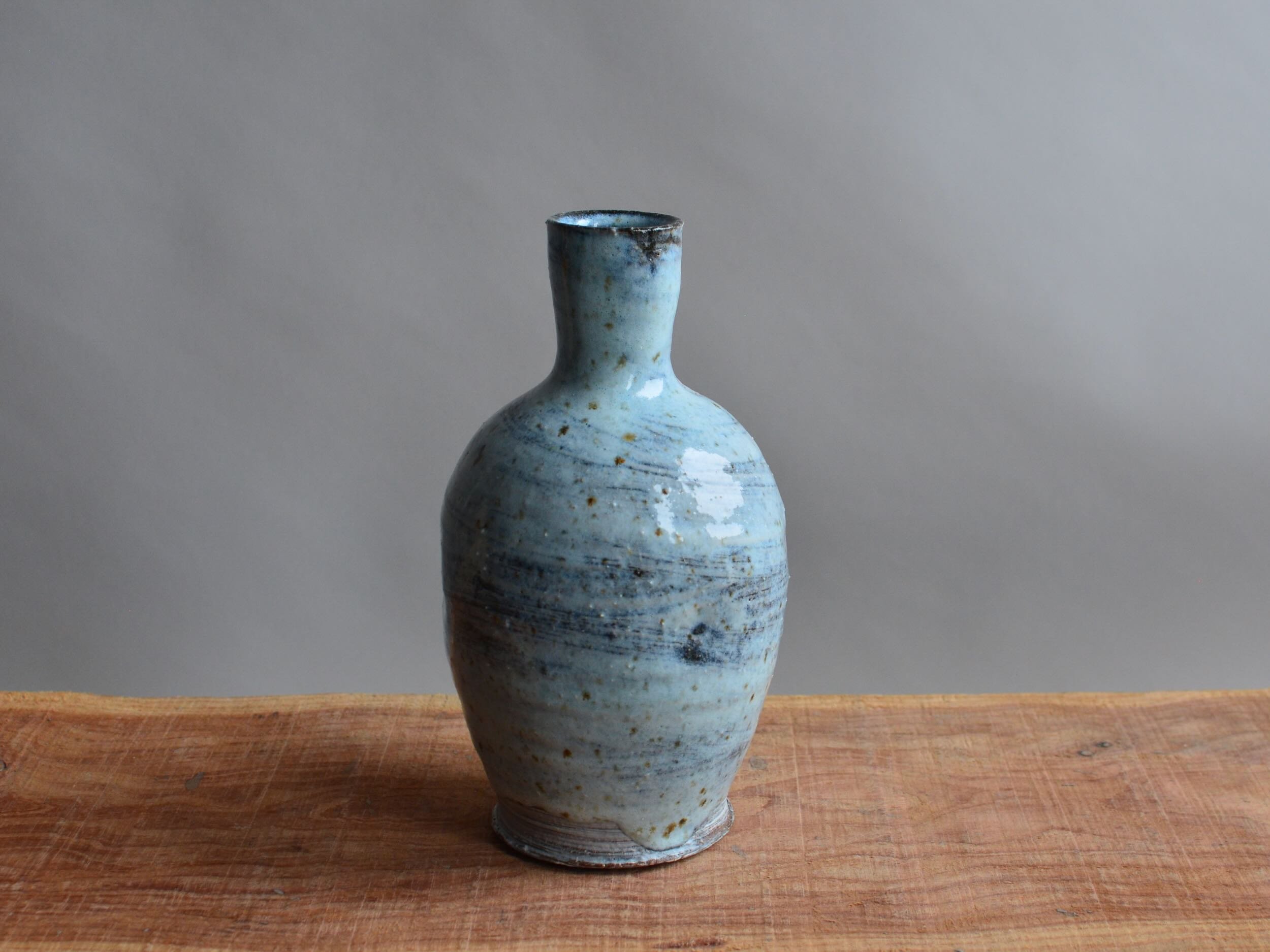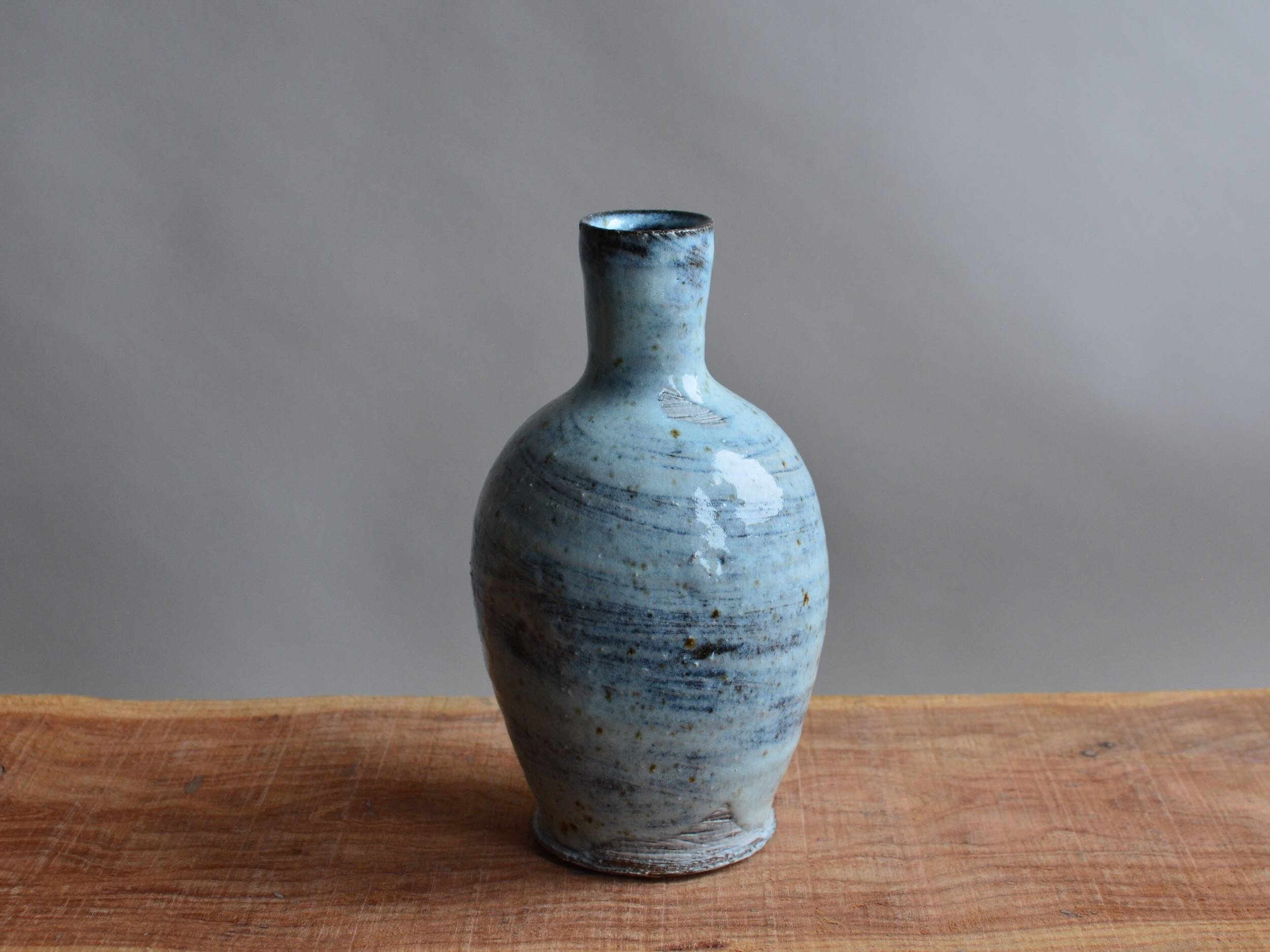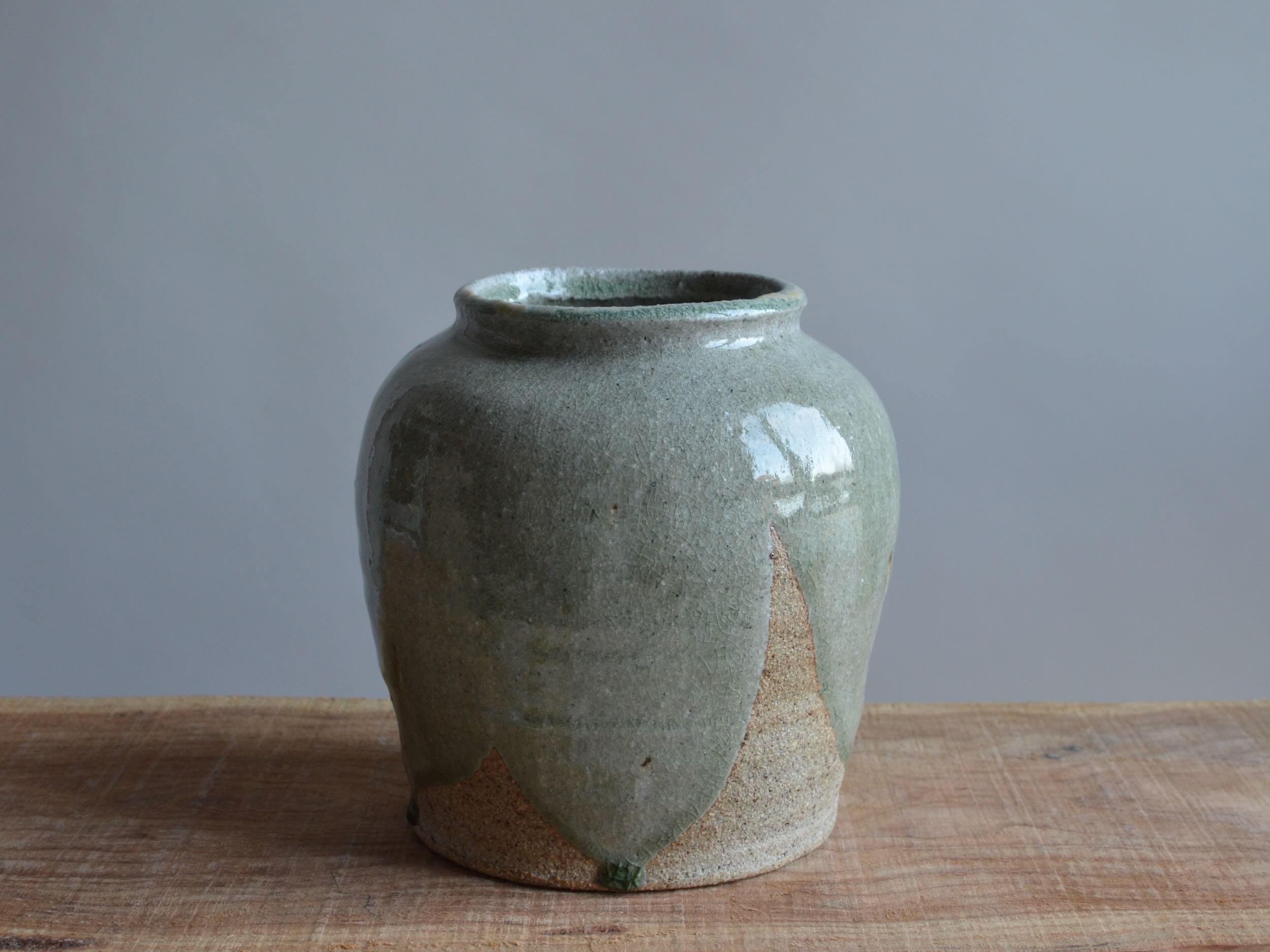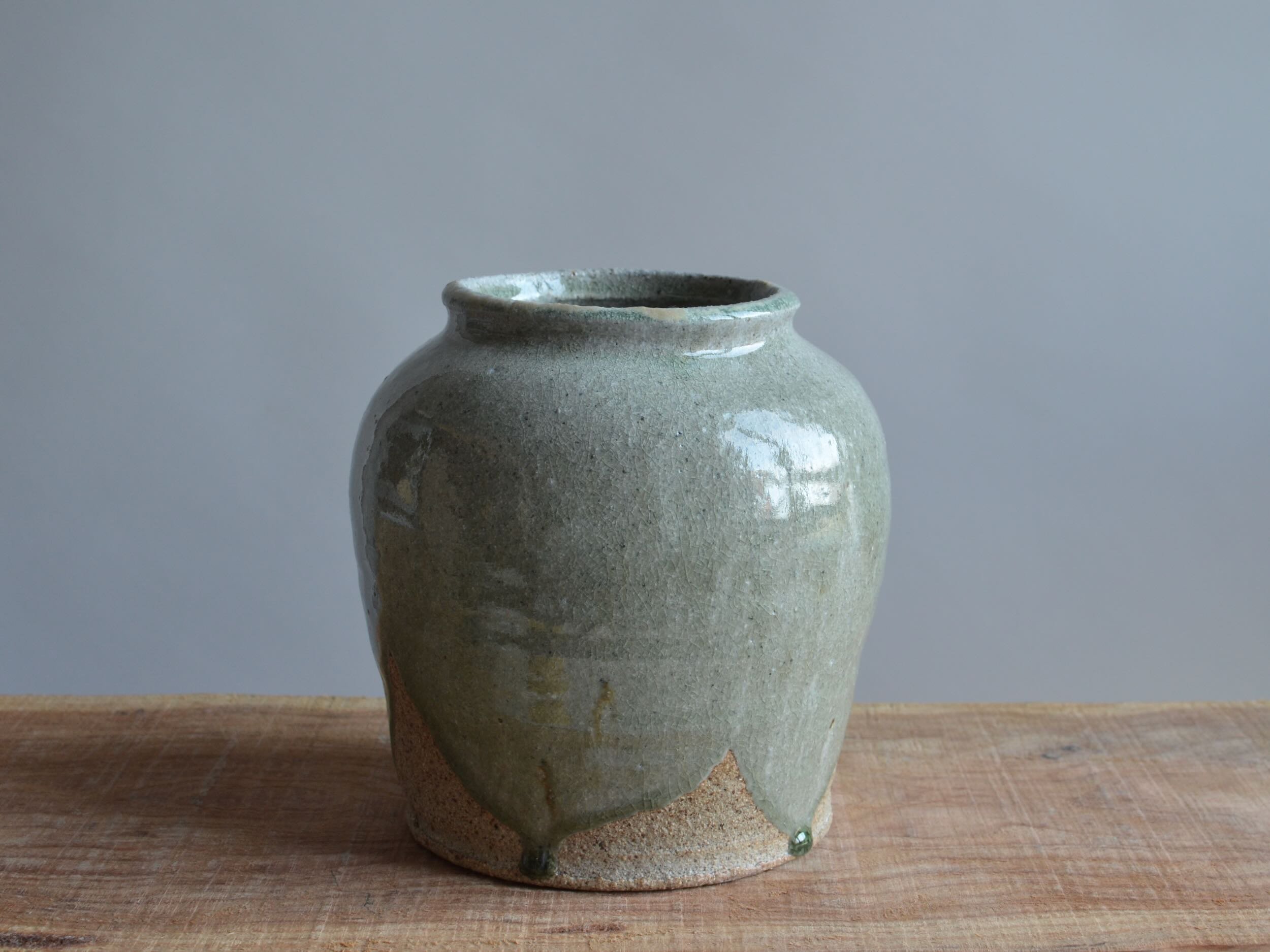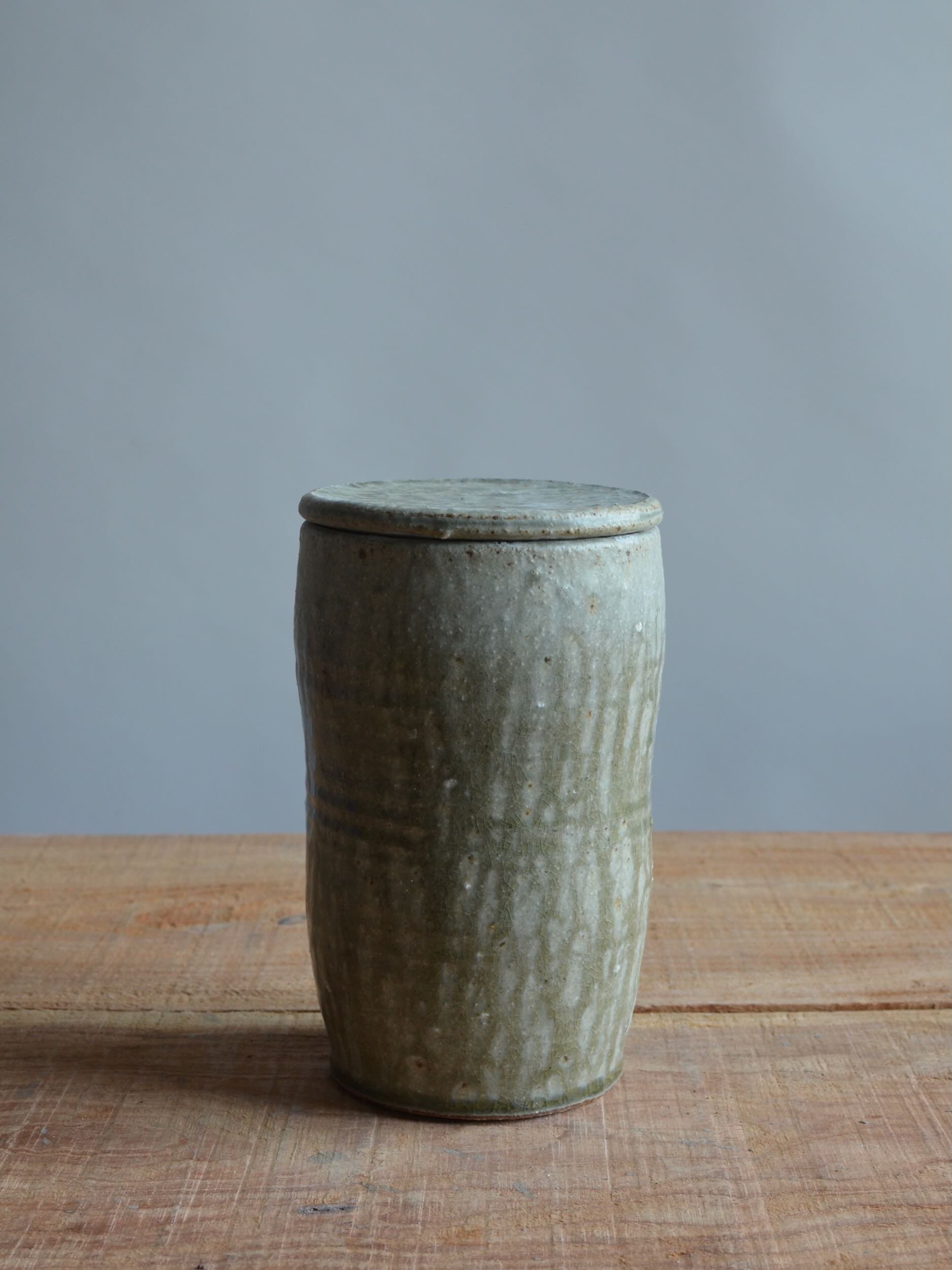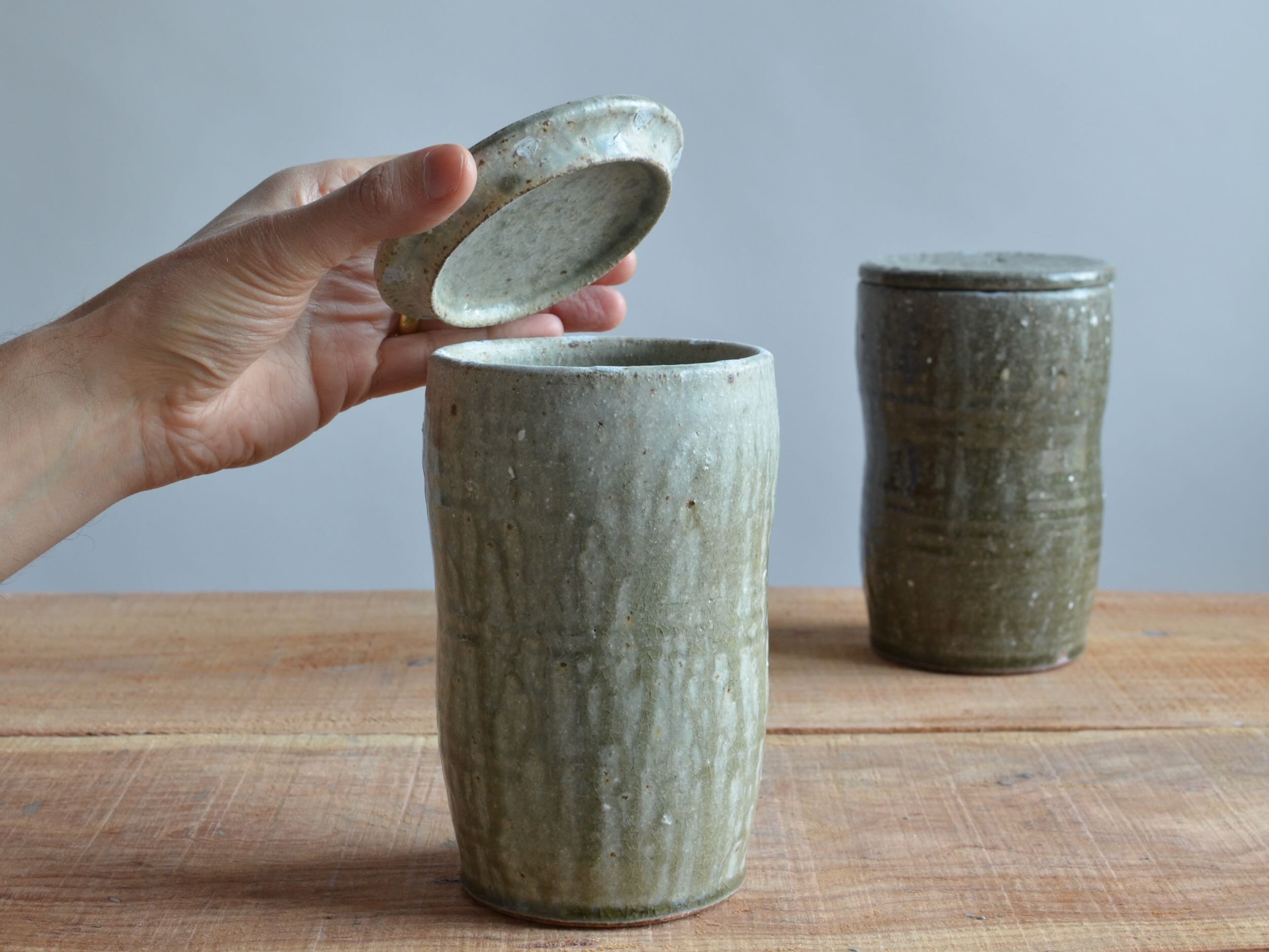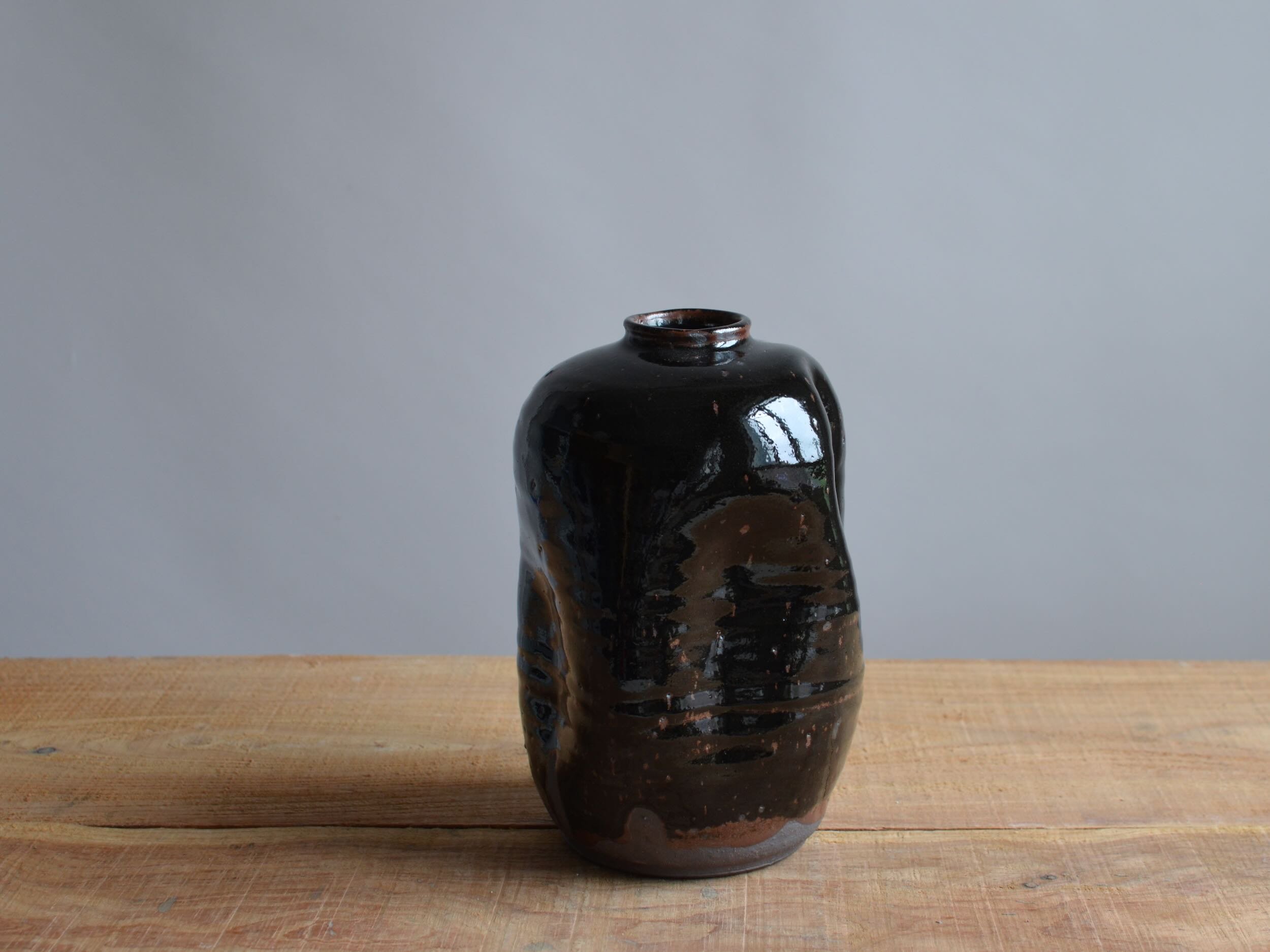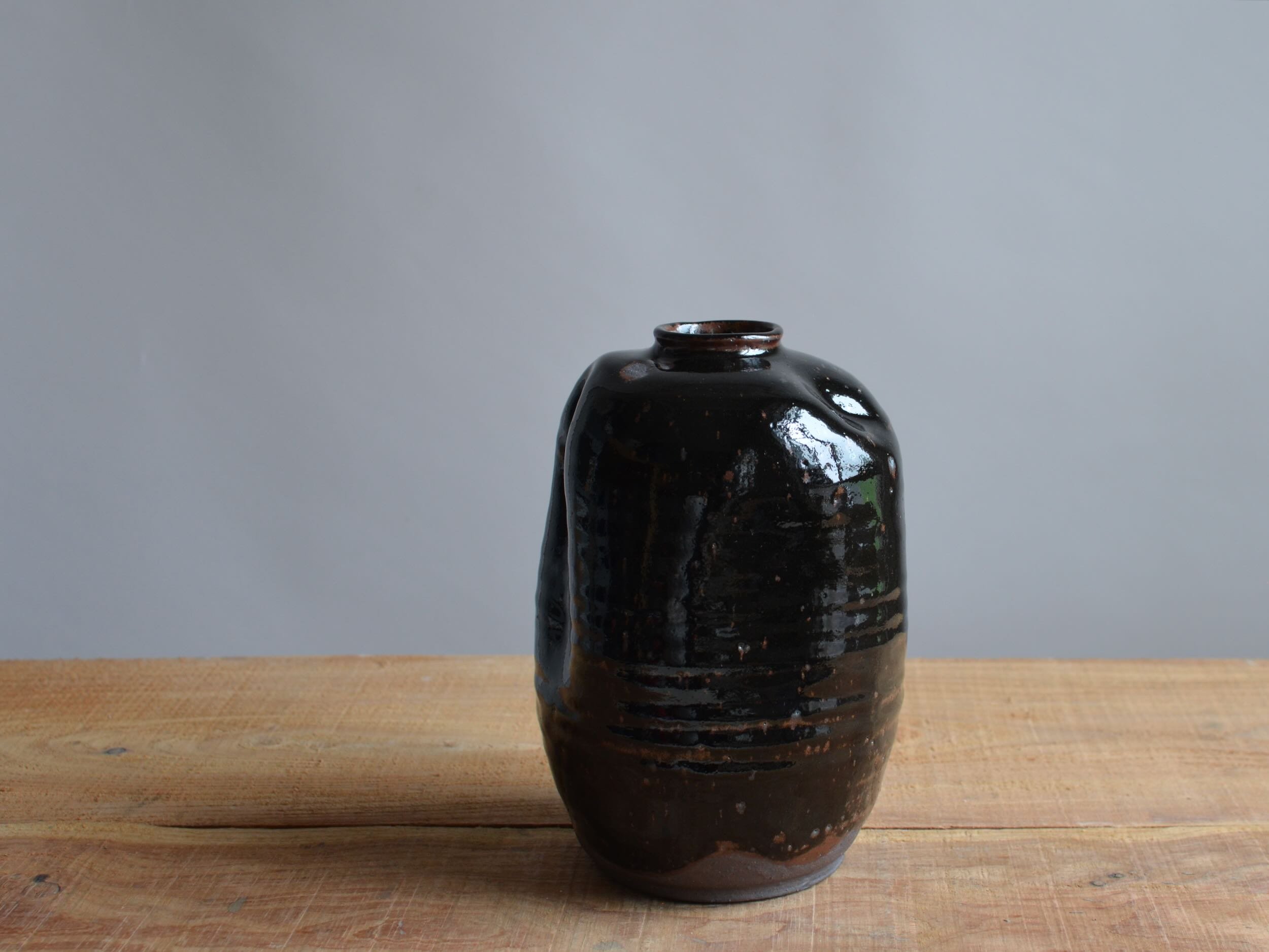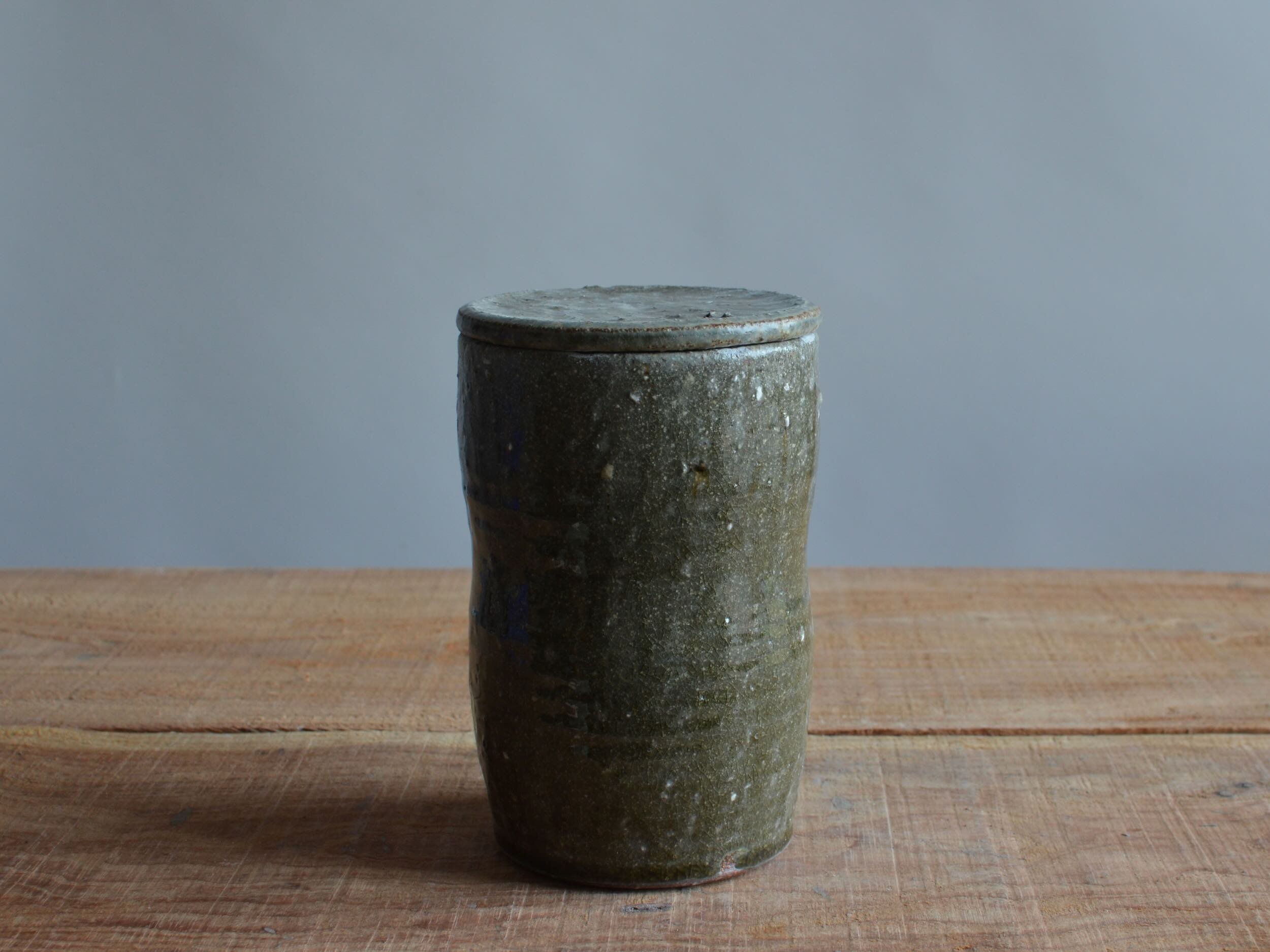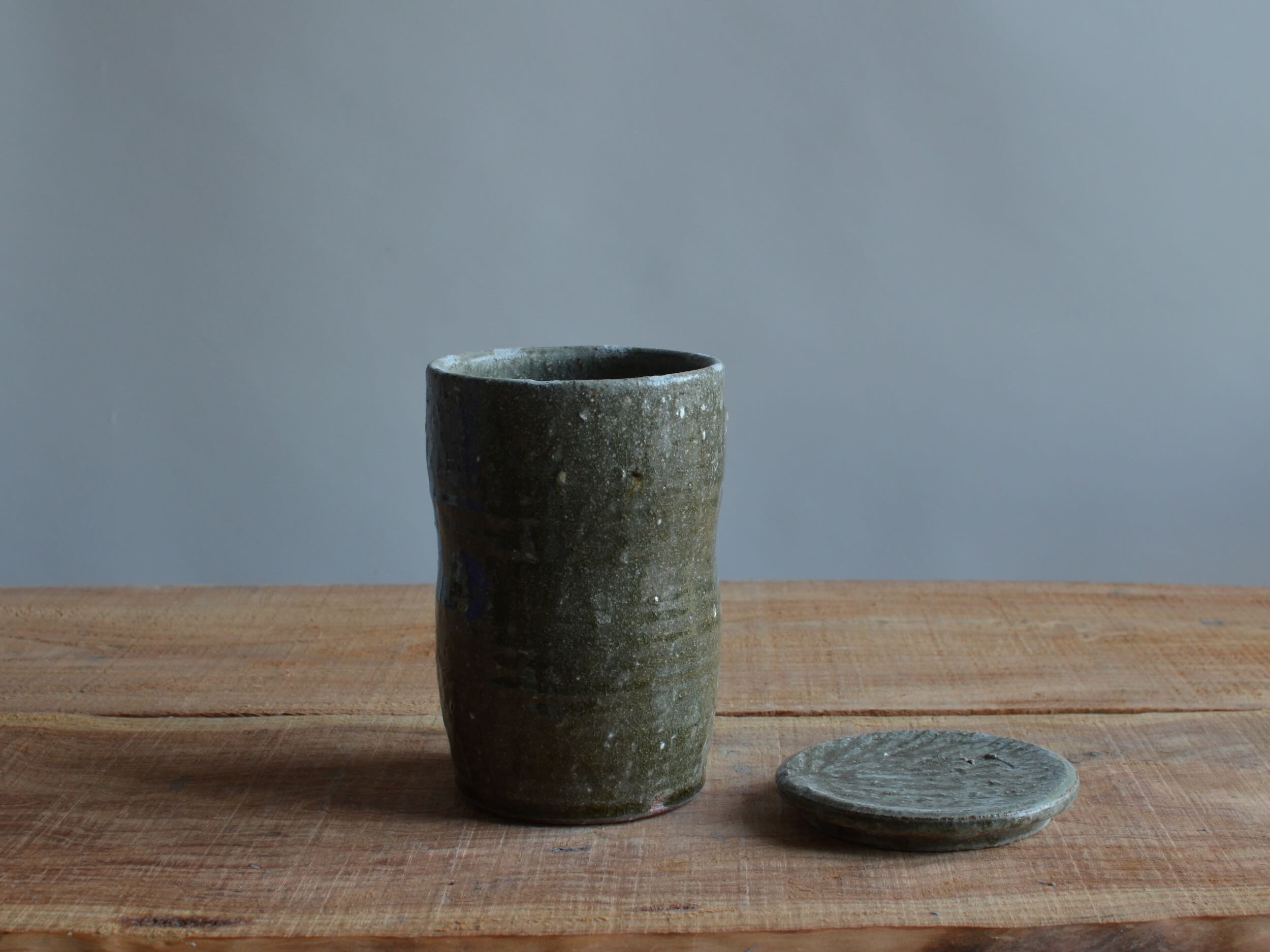Nuka Vase I
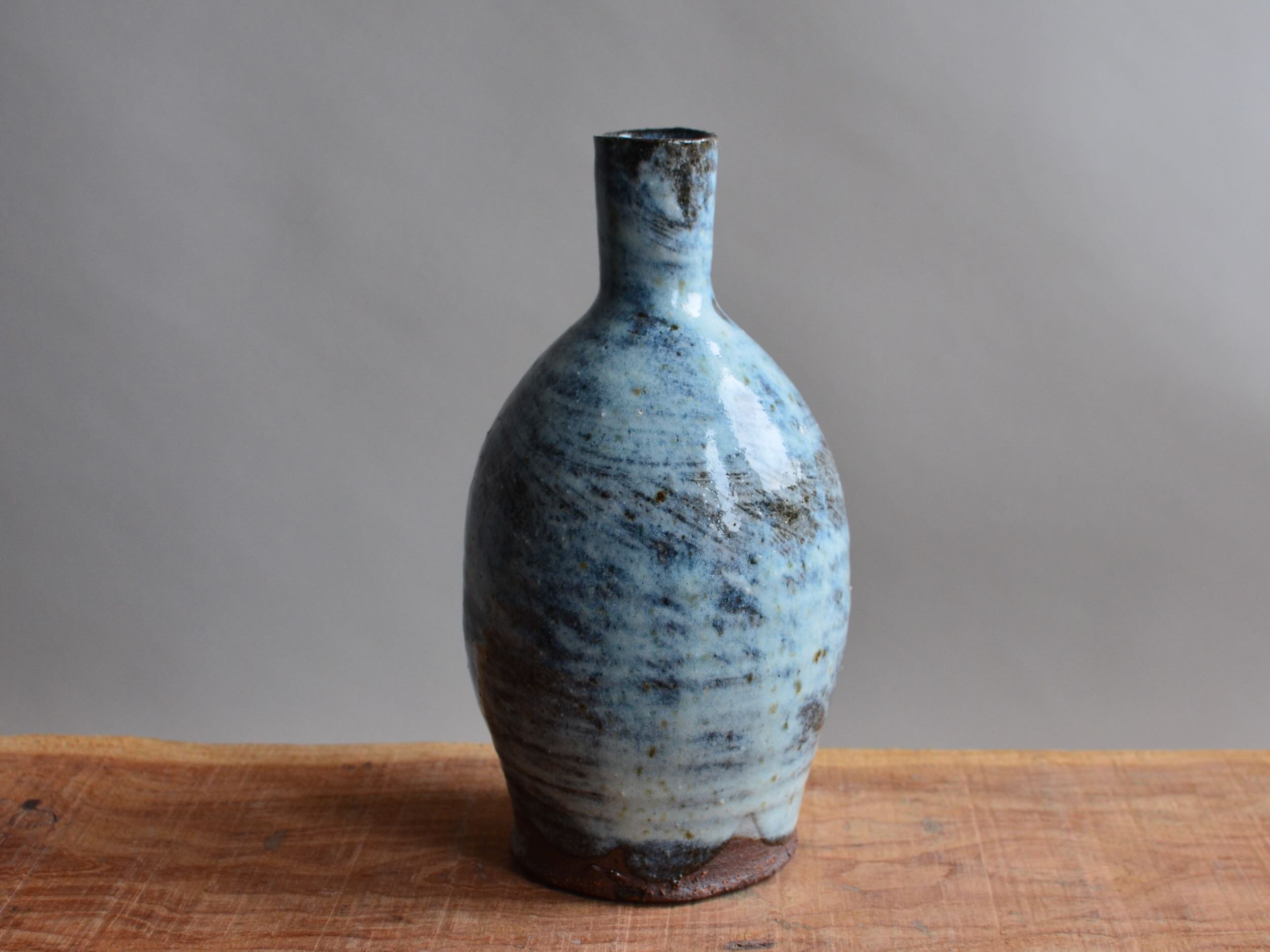
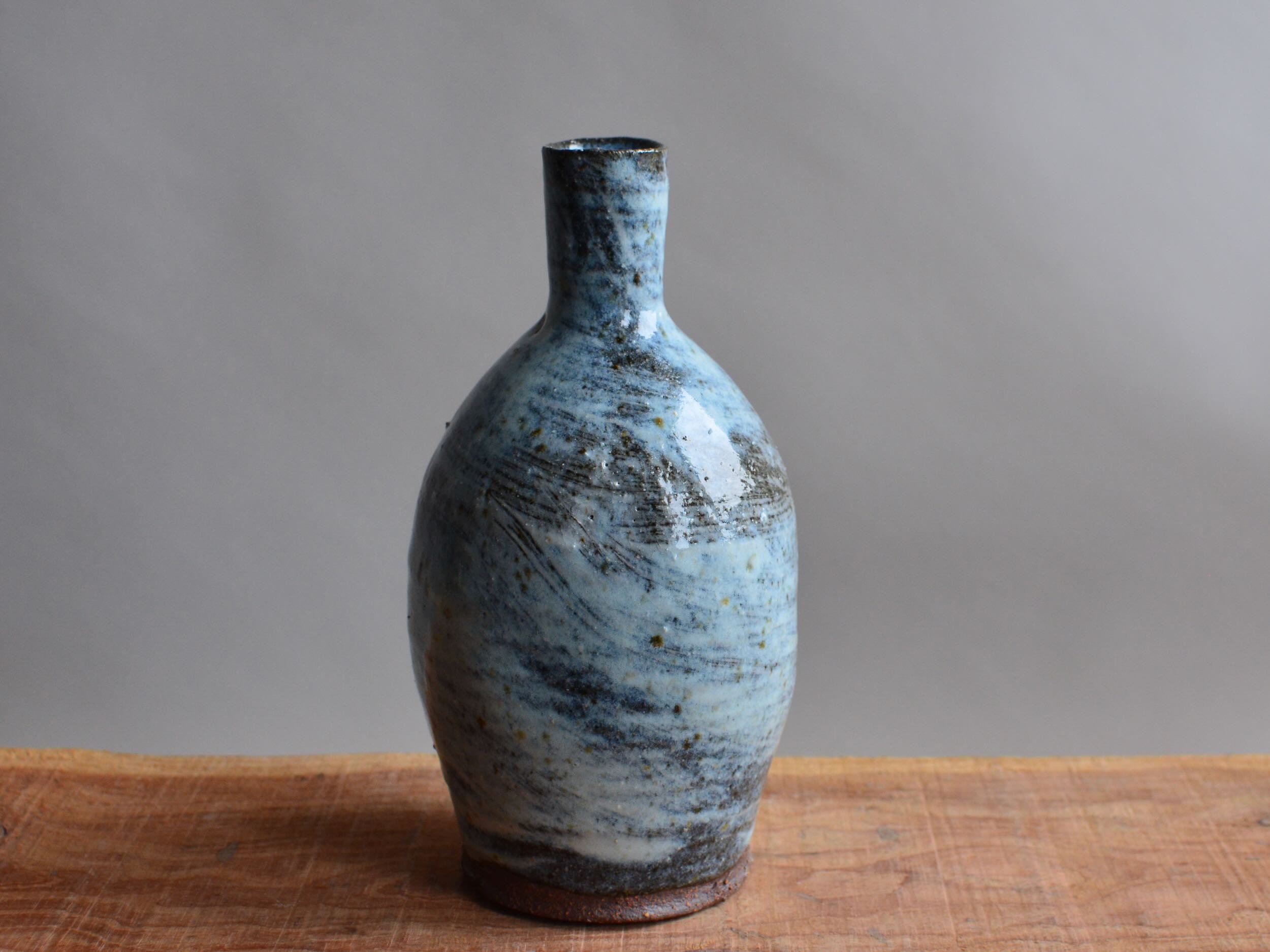
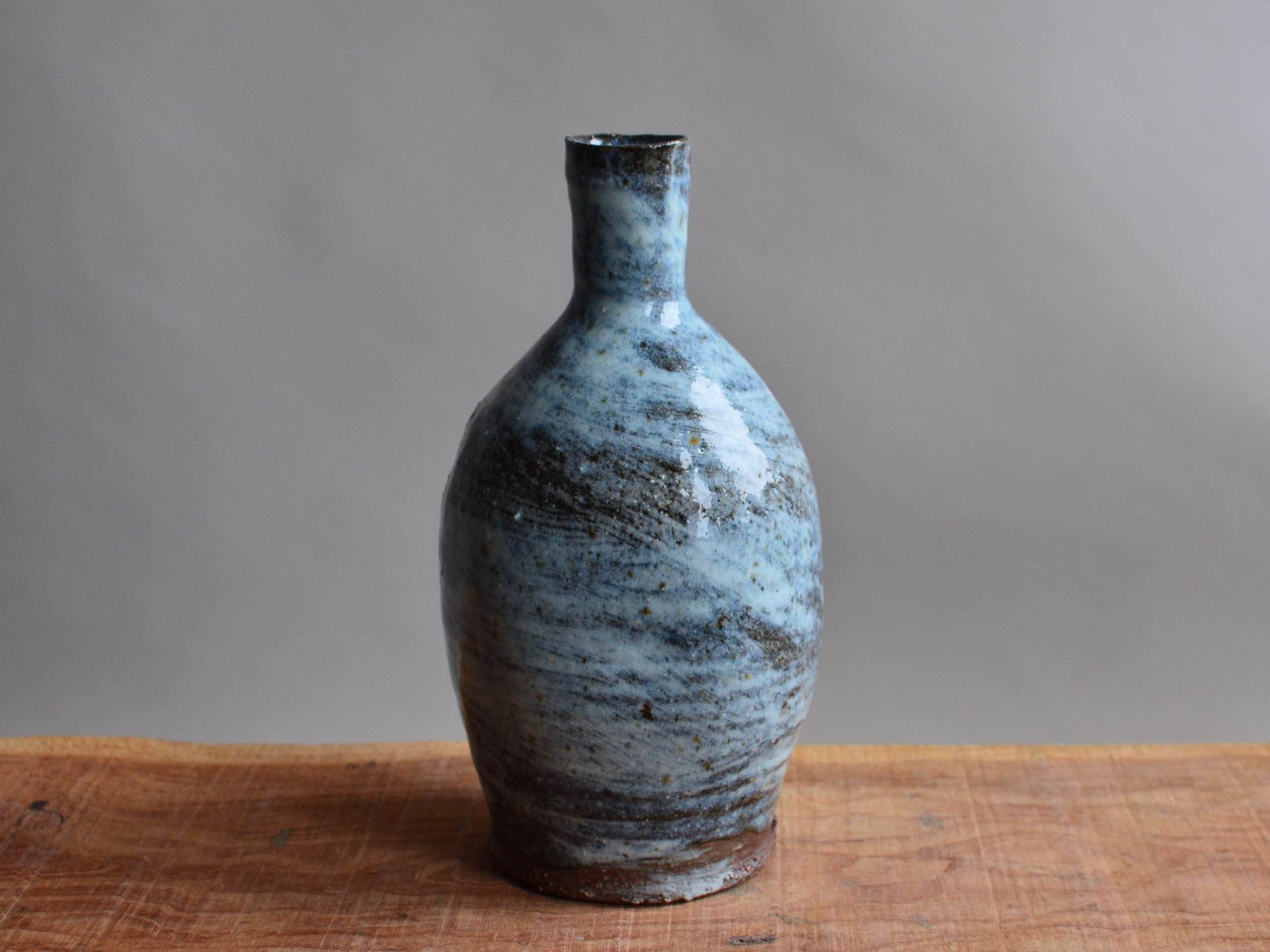

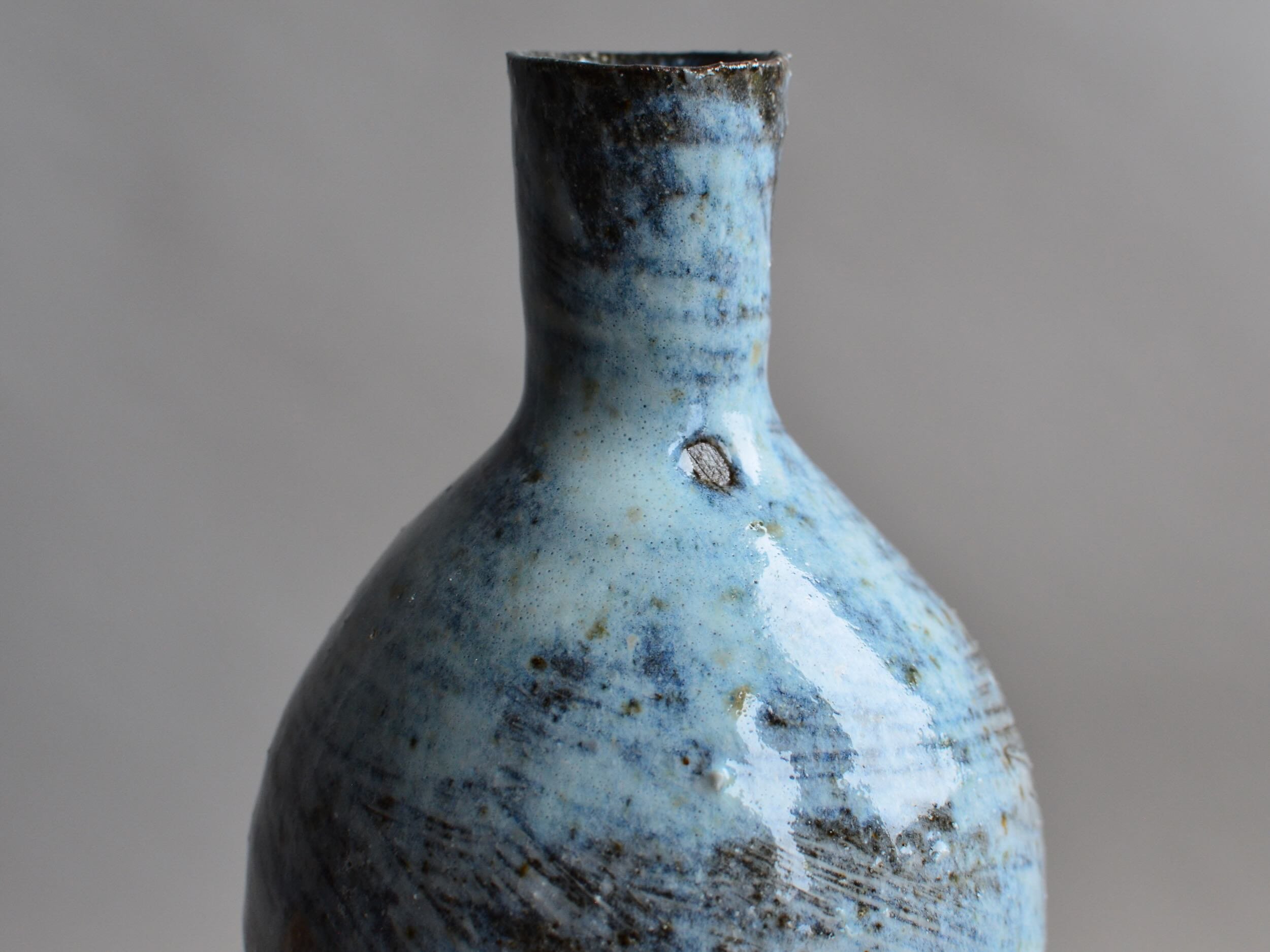
Nuka Vase I
A vase or bottle form with a slightly open neck.
Thrown from a dark iron-rich clay, then brushed with white slip, and finally thickly glazed with a Nuka type glaze.
The glaze is transparent where thinner, showing the brushed slip and dark-coloured clay body underneath. Where thicker the glaze becomes opaque and takes on a blueish white colour.
Nuka glazes originate from Japan and use rice straw ash as a main ingredient. Without local access to rice straw I have used native reed ash which is chemically similar and a good substitute.
I would advise not to place this vase directly onto unprotected furniture if it is to contain water for displaying flowers. Although I have tested it myself and have found no leaks, the highly textured clay sometimes leaves tiny pathways in the base or walls which water can eventually find a way through. Condensation can also form under the base of a vase if water is sitting directly inside for some time - protect your valuable items of furniture!
h. 22 x diam. 11.5cm
